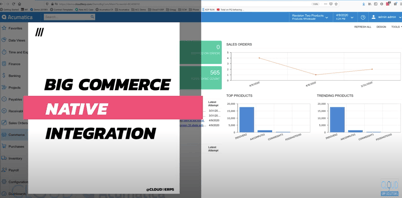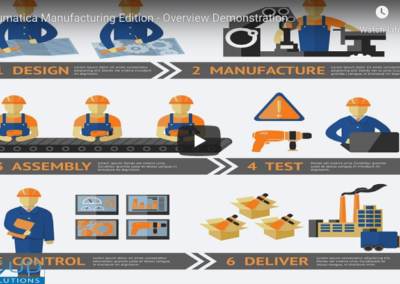Should You Consider an eCommerce Initiative as a Manufacturer?

Times have changed. Whether you’re reading this in the midst of the pandemic or after everything has gone back to normal, you know that the way businesses operate has evolved, and success relies on your ability to be adaptable. But the times have been changing for a while now—and not just because of the Coronavirus outbreak. Over the past decade, everything from manufacturing processes to the way goods are purchased has changed, and it pays to stay ahead.
The Evolution of the B2B Buyer
B2B buyers are now eCommerce savvy B2C consumers. Knowing this, they bring their digital retail expectations to work with them each day. These buyers are changing the B2B purchase journey one transaction at a time. B2B buyers are still proactive, but instead of pouring through catalogs, thumbing through Thomas Register, and making phone calls, they turn to search engines and manufacturer web sites. The self-serve model they love for B2C is driving their behavior on the job. Manufacturers and suppliers that reward these buyers with an online experience that includes eCommerce will earn their loyalty.
Cutting out the Middleman and Creating a Direct Relationship
For manufacturers, one of the most competent first steps is the embrace of an eCommerce initiative. Why? It’s simple. Purchasers like to shop the same way they shop personally, and with the rise of Amazon and other eCommerce leaders, the buying process has changed.
While this does present opportunities—cutting out the middleman by selling directly to consumers, offering increased customization, and building better relationships with customers, this presents two major challenges: delivering on the expectations created by sites like Amazon, and actually making the change from traditional manufacturer to manufacturer + eCommerce vendor.
While competing with Amazon may sound like the tougher portion of this, the reality is that many manufacturers are woefully unprepared for the world of eCommerce.
10 Dos and Don’ts of Setting Up Shop as a Direct-to Buyer eCommerce Initiative
From setting up a website to reestablishing sales team commission procedures and opening up a customer support line to help with technical issues and buying decisions, the move to eCommerce may feel like an overwhelming challenge for many manufacturers—especially those who have never forayed into the market before.
The path to success may feel like a challenge, but if such an initiative will help you reach new markets, improve operations, create relationships with customers, and make more money, the benefits often outweigh the hill you need to climb to get there.
In a recent infographic from Acumatica, this leading Cloud ERP provider discussed 10 Dos and Don’ts for launching an eCommerce initiative, exploring how you can deliver the information, measurement, and execution that your customers expect, discussing strategies for audience creation, ease of use, content, and more.

True Cloud Solutions Deliver for the Modern Manufacturer
There are many ways to approach an ecommerce initiative, and many more ways to succeed while doing so, but one of the most effective steps it to embrace true cloud ERP for ecommerce. Designed to connect solutions, ease workflows, and help your business operate more efficiently, true cloud solutions like Acumatica deliver the functionality and ease of use that you need.
Whether you’re outgrowing your current software, finding that your legacy systems aren’t ready to handle your needs, or you’re looking for something more suited to your processes and needs, the right advice, assistance, and support can make or break your ERP journey. At Cloud 9 ERP Solutions, we understand the challenges that manufacturers face in selecting ERP software, and have supported companies just like yours throughout their journey. Check out some of our demos to learn more:
Acumatica Commerce Edition Demo (Featuring BigCommerce)
Acumatica Manufacturing Edition Demo
Additional eCommerce Resources
Drop Shipping Management: How Cloud ERP Can Help
Three Areas Where eCommerce Integration Drives Business Forward
The eCommerce Pick-Pack-Ship Process




